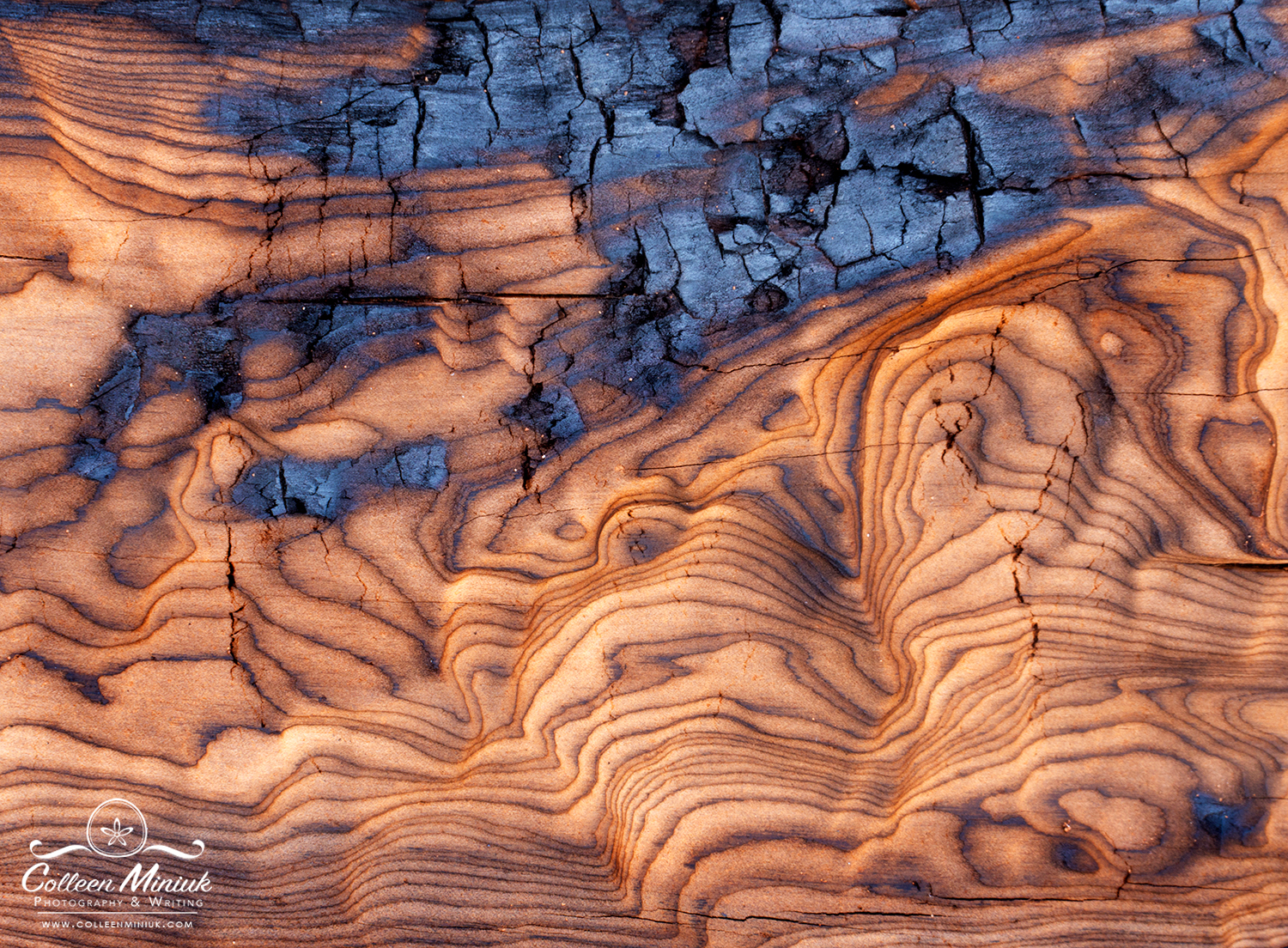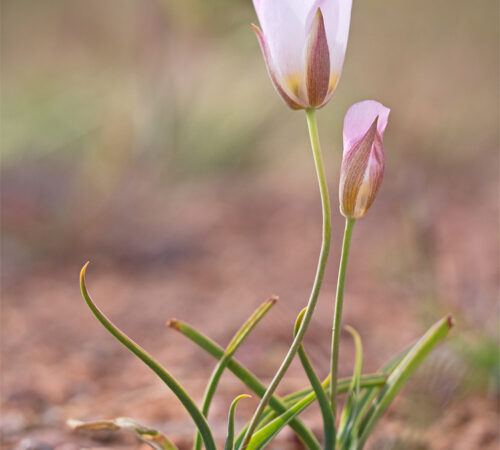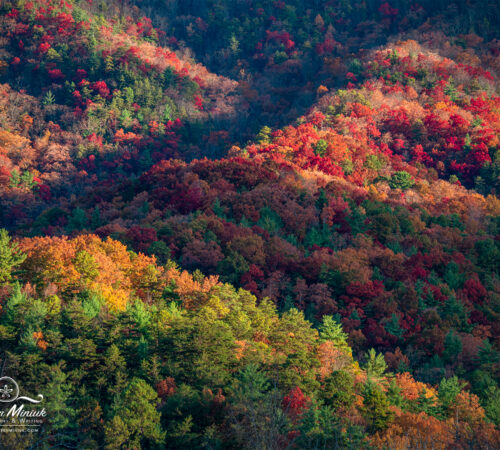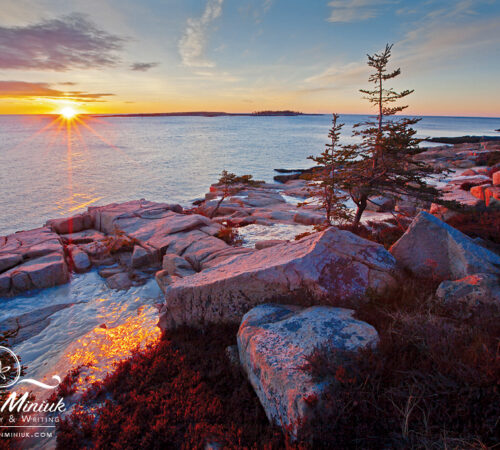Adjusting for the Blues

Dear Bubbles:
Do you go out to photograph if you’re down or depressed? Does it change your perspective?
~G
Dear G:
I’m grateful for all the questions submitted to Dear Bubbles, but I’m especially thankful to you for bringing up a topic some feel uncomfortable talking about. The truth of the matter is, depression is fairly common among us. The World Health Organization suggests that approximately 5% of adults around the world have depression. The National Survey on Drug Use and Health reported that an estimated 8.4% of American adults had at least one major depressive episode (one lasting longer than two weeks) in 2020 alone. Even if you’ve not experienced the depths of depression, you’ve likely felt things like sadness, grief, loneliness, and/or anxiety at some point. These emotions are part of the human condition as we navigate life’s challenges.
While it may surprise some to hear this, I am not always the bubbly gal I portray. In fact, since 2015, I’ve swam through waves of situational depression while getting through a long separation, divorce, family illnesses, deaths, and ongoing global pandemic. Situational depression differs from clinical depression in that it is not a psychological mood disorder but rather a temporary state triggered by traumatic events. I share not to gain sympathy—don’t worry, I have a GREAT therapist—but rather to say what you may see on social media or in other public situations doesn’t always portray someone’s full story. And also, that if you are feeling blue or depressed that you aren’t alone. I wish it weren’t so, but we all suffer in our own ways.
After my life took a major unexpected left-hand turn, from April 2015 through October 2017, I couldn’t make a landscape photograph to save my life. The world was too overwhelming and too big for me at the time to try to make order out of chaos, let alone try to shove it into a small photographic frame with any success. I made a ridiculous amount of macro images—the level of detail my taxed brain could handle at the time. I also wrote a lot—explorations (and swear words) in my journal, chapters in my memoir (which I’m still working on…), and some poetry here and there (haiku!!) to go with my photographs.
At home in June 2015, I caught a random reference to the Back-o-Beyond Road in Sedona, Arizona which got me pondering about what in the world the words “Back-o-Beyond” meant. Words started to fall out, and I ended up penning a poem—starting with that phrase—about what time spent around campfires in wild places with one of my close friend felt like. I called it, wait for it, “Around the Campfire” (cut me a break, I was going through really heavy stuff then…). Here’s the poem:
The back of beyond
Hunches over the maddening voices
Of yesterday. Time enough,
Cold enough to build a fire.
Tails of haunted demons whip
In the fury of the crackling flames,
Spewing embers that sear
Your cozy sweater
And singe unforgiving memories
Into your weathered and weary flesh.
A naked soul bared on stone watching,
Thirsting for answers to rise,
Rise out of the brazen ash,
Exhaling a soaring phoenix
In whorls of smoke.
Aspens rustle,
Clouds cry,
Freedom stirs
In the wind’s sigh.
Obscurities melt
Into the nothingness
Of the Earth. Welcome
To your life of rapture.
I spent hours and hours huddled around campfires over the next year and a half, on my own and with friends, trying to make a photograph of fire, flames, ashes, anything to match the poem. In November 2016, Guy and I met up at the Grand Canyon. I wanted to bring home remarkable images of the grandeur I saw in the landscape. It was the Grand FRICKING Canyon after all. It doesn’t get any more breathtaking than the Grand Canyon! I tried and tried and tried, but I couldn’t pull off a wide-angle perspective. I ended up finding this charred piece of wood in a burned area that perfectly matched the emotions I felt when I wrote the poem and continued to feel about my life: the idea that whorls of beauty still existed even as the demons whipped and the embers seared. I sat with this wood for hours, sometimes photographing, sometimes not, sometimes crying, sometimes not. I wasn’t absolved of all my issues, but I did feel a comfort and peace I hadn’t felt for some time. The photograph I paired with the poem is at the top of this post.
Then, in October 2017, I took my workshop group to Little Long Pond near Acadia National Park in Maine for a sunrise shoot. Oh what a magical morning it was! Penobscot Mountain peeked in and out from behind clouds. Fleeting light grazed across a palette of oranges and yellows and reds from the trees turning color. Loons called in the distance. The fog in my life lifted in that moment. I can’t tell you why or how. It just did. After over two years of struggling, I finally made a landscape image of Little Long Pond, one that sits over my fireplace still today. It’s my reminder to keep calm and carry on when shit happens. Because as life goes on, shit is gonna keep happening.
Each difficult situation hasn’t been easy, but it has taught me to be more mindful and less judgmental. Each one has also given me more confidence to face uncertainty and hardship with a little more grace each time. A. A. Milne (the author behind Winnie the Pooh) wasn’t kidding when he said, “You are braver than you believe, stronger than you seem, and smarter than you think.”
So to answer your question directly, yes, I give myself the opportunity photograph in all moods. My images don’t always come together well or in a tidy form. But yes, I allow my emotions to influence not only how I see the world but also how I convey that world through my photography. Creativity doesn’t just turn on when you’re joyfully skipping around fields of flowers and butterflies and rainbows like Pollyana and off when you aren’t. Being able to convey a wide range of emotions—not just the ones society has deemed “positive”—makes us more expressive, more well-rounded artists. We carry the ability to define and express meaning with us all the time, everywhere, anywhere, in any internal and external conditions, and about anything.
In hopes of helping you get through those hard times and adjust your photography approach when you are feeling the blues, here are some thoughts:
(Disclaimer: The contents of this post should be used for informational purposes only and do not constitute medical advice. Please contact your doctor to receive medical advice on any questions you might have about mental health.)
Embrace self-care. What do you do when it rains outside? You put on extra protective gear. You cover your camera. You take your time working through the technical and creative processes. Do the same when it’s raining inside. Be mindful of the emotions you’re experiencing but avoid judging them. There are no good or bad emotions. Just emotions. Recognize what it is you need in terms of support to help you through them. Slow down. Take a deep breath. Be extra kind to yourself.
Connect with your support network. I hid my story and shame from the world—including my immediate family—for over a year, believing I could handle it on my own. I didn’t want to burden others with my baggage. That was a mistake. It led to even worse loneliness and depression. Please, please, please do not feel embarrassed about how you feel. Reach out to trusted friends, family members, and others within your community. Talk about what you’re going through. I repeat, you are not alone. And you do not need to go through difficult times alone. If you need additional support, contact SAMHSA, which stands for Substance Abuse and Mental Health Services Administration, at https://www.samhsa.gov/find-help/national-helpline.
Get outside (with or without a camera). Scientific research has shown that being in nature reduces anxiety, improves cognition, and sharpens attention. Spending just a few minutes in the sun to get a dose of vitamin D can increase serotonin and lower blood pressure. (Just remember to wear sunscreen please.) Something as simple as stretching your legs in a short walk in your backyard or around your neighborhood block in the sunshine can help boost your spirits. If you can’t escape the indoors for long periods of time, consider listening to nature sounds or watch nature-based videos. After I make a photograph in some beautiful place, I frequently make a 10- to 30-second video of my scene (either with my iPhone or big-girl camera) intending to replay it at home whenever I need a quick pick me up. Watching the light dance in waves, hearing ravens caw, and reliving the blissful memory on the computer screen re-centers me. It reminds me of what’s truly important. It’s a metaphorical breath of fresh air.
Reduce your expectations: If the pandemic taught us anything, it’s that mere survival is success. That’s it. That’s all there is. Look, no one, and I mean absolutely no one, expects you to produce a photograph now or ever. You don’t have motivation to photograph? Awesome. Then don’t. You have motivation to photograph? Awesome. Then do. What if you just made 150 ICM images of tree bark but not a single one of them turned out? Awesome. Keep making photographs because it’s bringing you fulfillment whether you’ll delete them or hang them on your wall later. Embrace an autotelic personality. Enjoy the experience of photographing without expecting results. Make photographs because they—and the moment—mean something to you. Not because you have to. Expectations are the killer of joy. If you’re already going through hard times, trust me, you don’t need to make it any harder on yourself.
Express gratitude: If there’s anything that serves as a ladder out of the well of sadness or situational depression, it’s naming three things you’re truly grateful for in this life. It can change my mood almost instantly. As such, it’s how I start my day every morning to set the tone for the day no matter how I’m feeling. It’s what I turn to when I find myself starting to drown in self-pity, disappointment, frustration, fear, or other difficult states. When I’m feeling depressed, I’m grateful for simple things we tend to take for granted: to still be breathing, for the soft sheets in my bed, for a cup of fresh-brewed coffee. When I’m out with my camera and I’m not making images worth a damn, I’m grateful for things like the ability to smell the fresh air, to hear the birds chirping, to get my feet wet. When I make an image I’m proud of, you better be sureI do a little happy dance. When times are tough, find some light by refocusing your attitude on celebrating anything and everything. Even the darkness.
Approach your emotions and photography with curiosity: I’ve been running an ongoing non-scientific experiment for years with myself: do life events (or the absence of) affect the orientation in which I photograph? You’ll recall that vertical orientation conveys more drama and visual tension than a more peaceful horizontal orientation. While it’s the same amount of real estate, the visual elements feel like they have less room to work with each other within a vertical frame. Visual elements have more room to breathe in a horizontal frame. Given that, my results are consistent: if my everyday life is relatively stress-free, I tend to photograph in vertical orientation more frequently. However, if I’m wading through stressful times in my everyday life, I tend to photograph in horizontal orientation more regularly. Turns out, photography provides just the balance I need. It’s my yin to my yang. What studies about your own approach can you conduct? What can you learn about yourself and your connection with photography and/or the world around you by studying your many states of being, your responses to certain variables, and the effect of your behaviors on the results? How can analyzing your emotions, in lieu of judging them, lead to new ideas?
Challenge yourself to make a photograph of your mood: If you could visually express how you felt, how would you approach it? Feeling angry? Include more red, which triggers a flight-or-fight response in humans. Feeling dark? Fill your frame with more shadows and blacks. Feeling hopeful? Include a sunburst. Want to run away? Put your dominant visual element on the edge of your frame. Seeking peace and stability? Center your visual element instead. Use this opportunity to get a deeper understanding of Gestalt psychology and how to incorporate human perceptions into your images. (To get started on this, or to refresh your memory, visit my “On Breaking the Rules” post about perceptions and composition: https://dearbubbles.com/2021/06/on-breaking-the-rules/.)
Express yourself in different ways beyond photography: What happens when you look at one of your images and it looks too blue? You don’t add more blue. You compensate by adding more orange to the frame via white balance functions, right? Same goes for photography. If photographing feels too much like a burden, put the camera away and go do something else. Add some warmth in other ways. Writing. Painting. Dancing. Singing. Knitting. Woodworking. Reading. Watching a movie. Cooking. Whatever you think would brighten your day. You don’t have to be good at it–just go play or try something new. As I’ve written before, you need raw materials from your life, beyond photography, to feed the creative process and to help you make more personal connections with your subjects. (For more on this, read my earlier post about “Keeping it Fresh”.) Even if you aren’t feeling productive with your photography, you can still grow as a human being through combinatory play which will eventually influence your photography if and when you decide to pick it back up again. Creativity doesn’t always fit in the rectangular box the camera manufacturers have provided to us.
Sending out extra hugs, fist bumps, and positive vibes to all who could use a little boost. You matter. Keep doing the best you can. You got this!
Be well (or be however you are feeling today), be wild,
~Bubbles
Have a question about photography, art, and/or the creative life? Need some advice? Looking for inspiration? Send your question to Dear Bubbles at [email protected] to be possibly featured in a future column post. (If you’d prefer a different display name than your real first name, please include your preferred nickname in your note.




